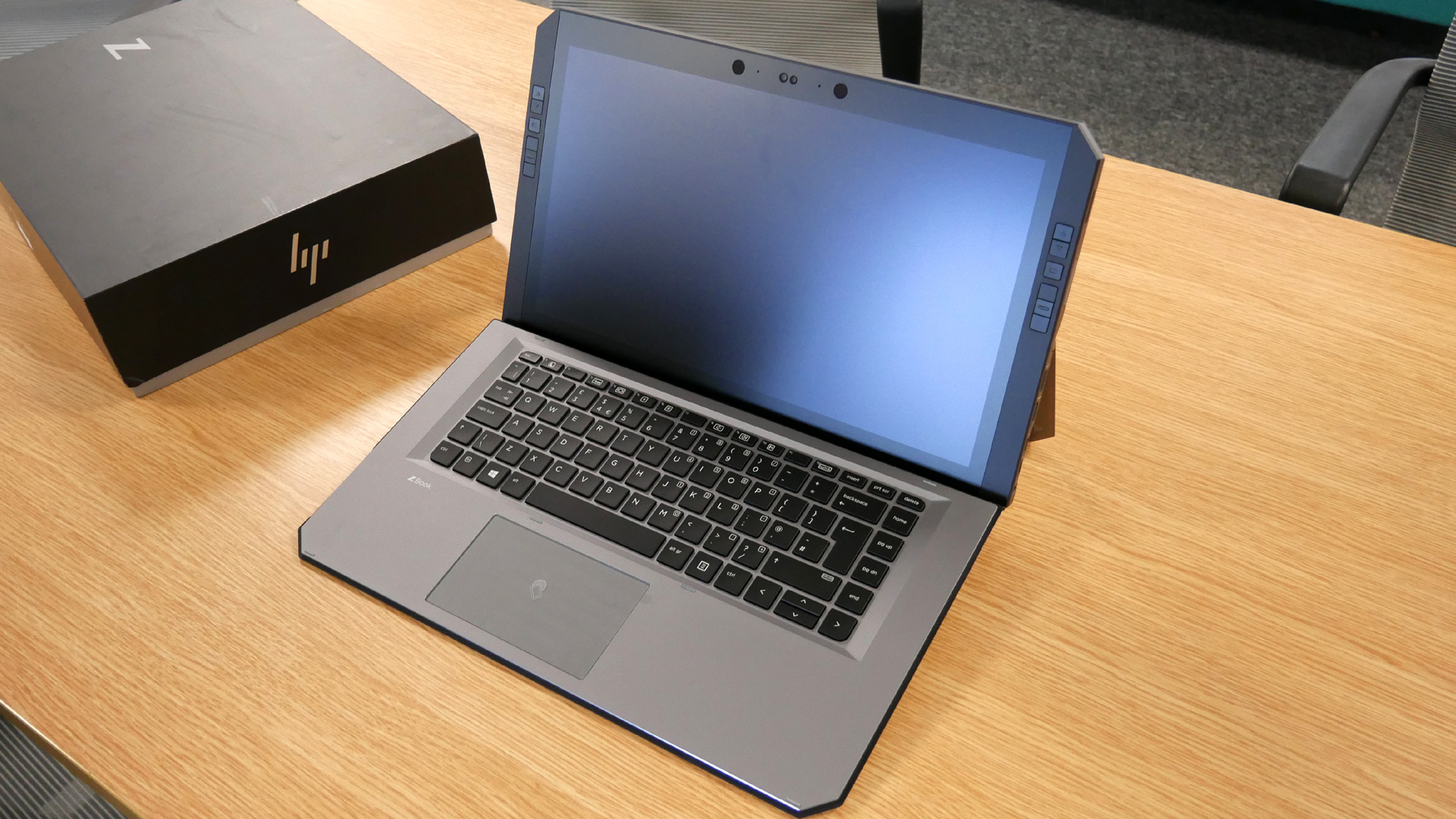TechRadar Verdict
HP’s tablet workstation is quirky and powerful but also slightly flawed, expensive and aimed at a very narrow market.
Pros
- +
Incredible build quality
- +
High quality 4K display
- +
Extensive pro features
Cons
- -
Big bezels make for chunky design
- -
Nvidia GPU brings some compromises
- -
Very expensive for a tablet machine
Why you can trust TechRadar
CPU: Quad-core Intel Core i7-8650U, 1.9GHz baseclock, 4.2GHz Turbo
RAM: 16GB DDR4
Screen: 14-inch IPS, 3,840 x 2,160, 10-bit
Storage: 1TB Toshiba NVMe SSD
Optical drive: N/A
Ports: 2x Thunderbolt 3 / USB-C, 1x USB A, HDMI, headphone, SD Card
Connectivity: Intel Dual Band Wireless-AC 8265 802.11a/b/g/n/ac (2x2) Wi-Fi and Bluetooth 4.2
Camera: Dual webcams, front with Windows Hello facial recognition
Weight: 4.78 lb (2.17kg)
Size: 0.75 x 14.35 x 8.94 in (1.9 x 36.4 x 22.7 cm) with keyboard
The world’s most powerful detachable PC. So says HP of its ZBook X2. And who are we to disagree? Actually, we’d be the first to disagree if it wasn’t true. But the ‘detachable’ PC segment isn’t exactly mainstream, so it’s not that punchy a claim.
Anyway, the ZBook is essentially a large format tablet with a detachable keyboard. On paper, it’s in the same ballpark as a Microsoft Surface Pro or an iPad Pro. In practice, it’s a rather different species of 2-in-1 detachable, something that’s obvious the moment you clap eyes on it and scope out those massive bezels. Fashionable the ZBook X2 most definitely is not. However, on-trend slickness isn’t HP’s aim.
This is meant to be a serious tool for professionals and creatives, complete with pen input, Adobe Creative Cloud optimisations - including shortcut buttons on the screen bezels - and alleged workstation features and performance. Time to find out if HP can deliver on that demanding and self-imposed remit.

Price and availability
This generation of ZBook X2 went on sale last year and as such it’s pretty mature on the market. Official pricing is $5,308 or £4,538 for this very high end configuration. But if you shop around significant savings should be available. That said, as a niche product, availability isn’t wide and you may need to be flexible on some items of specification to get the best deal.
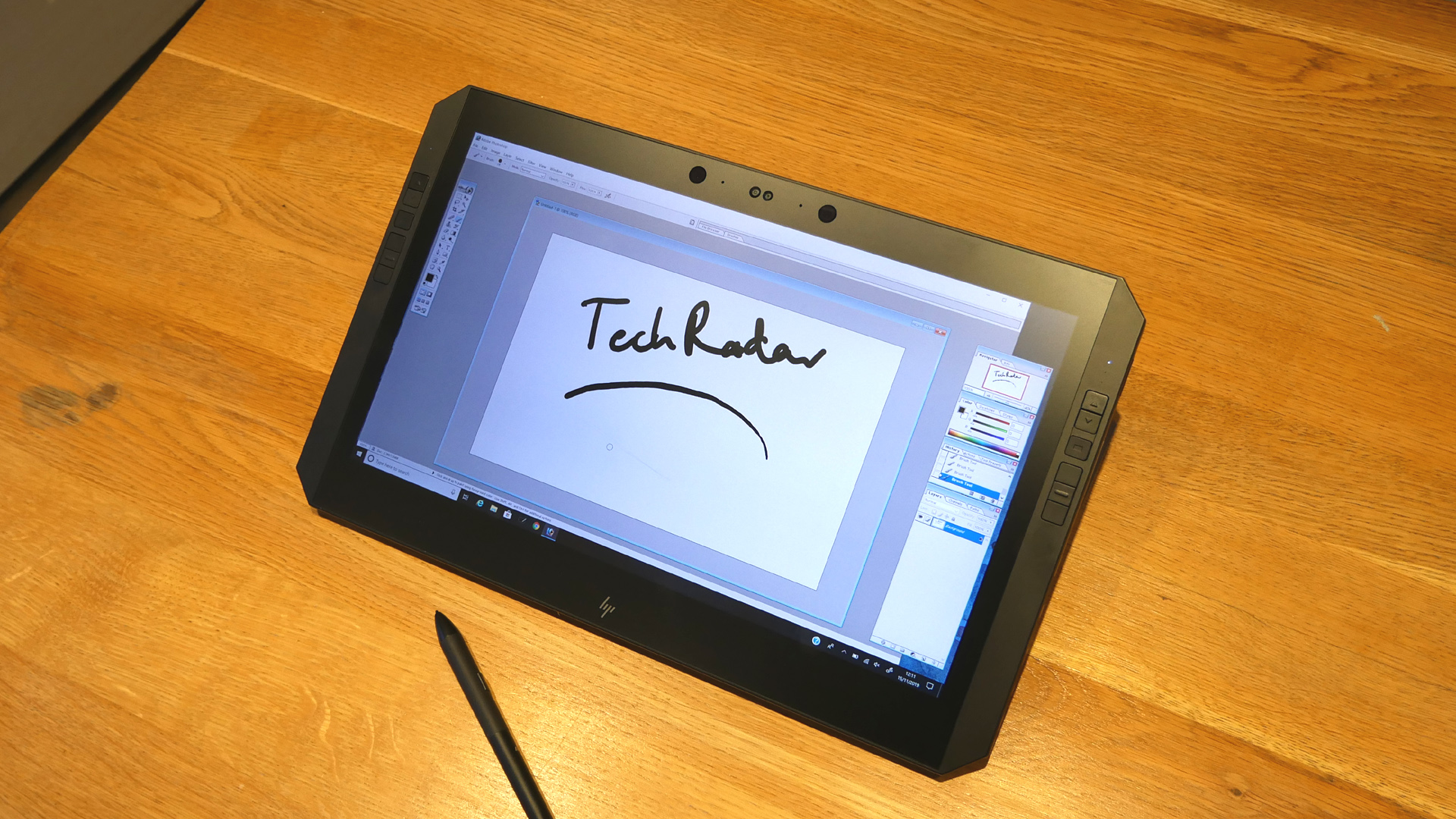
Design and features
Big, fat bezels. That’s what dominates initial impressions of the HP ZBook X2. Which is pity, because in many regards this is one of the most pleasing physical specimens in the tablet market.
The all-alloy chassis feels absolutely rock solid and the overall sense is of an extremely high quality device with a heavy-duty industrial vibe. That goes for the broadly adjustable alloy kickstand and the detachable Bluetooth enabled keyboard, too. The latter is also alloy with a soft undertray and feels remarkably solid for a keyboard of its type. It’s much more robust than most tablet keyboards. It even has a backlight, adding to the impression of a very laptop-like keyboard experience.
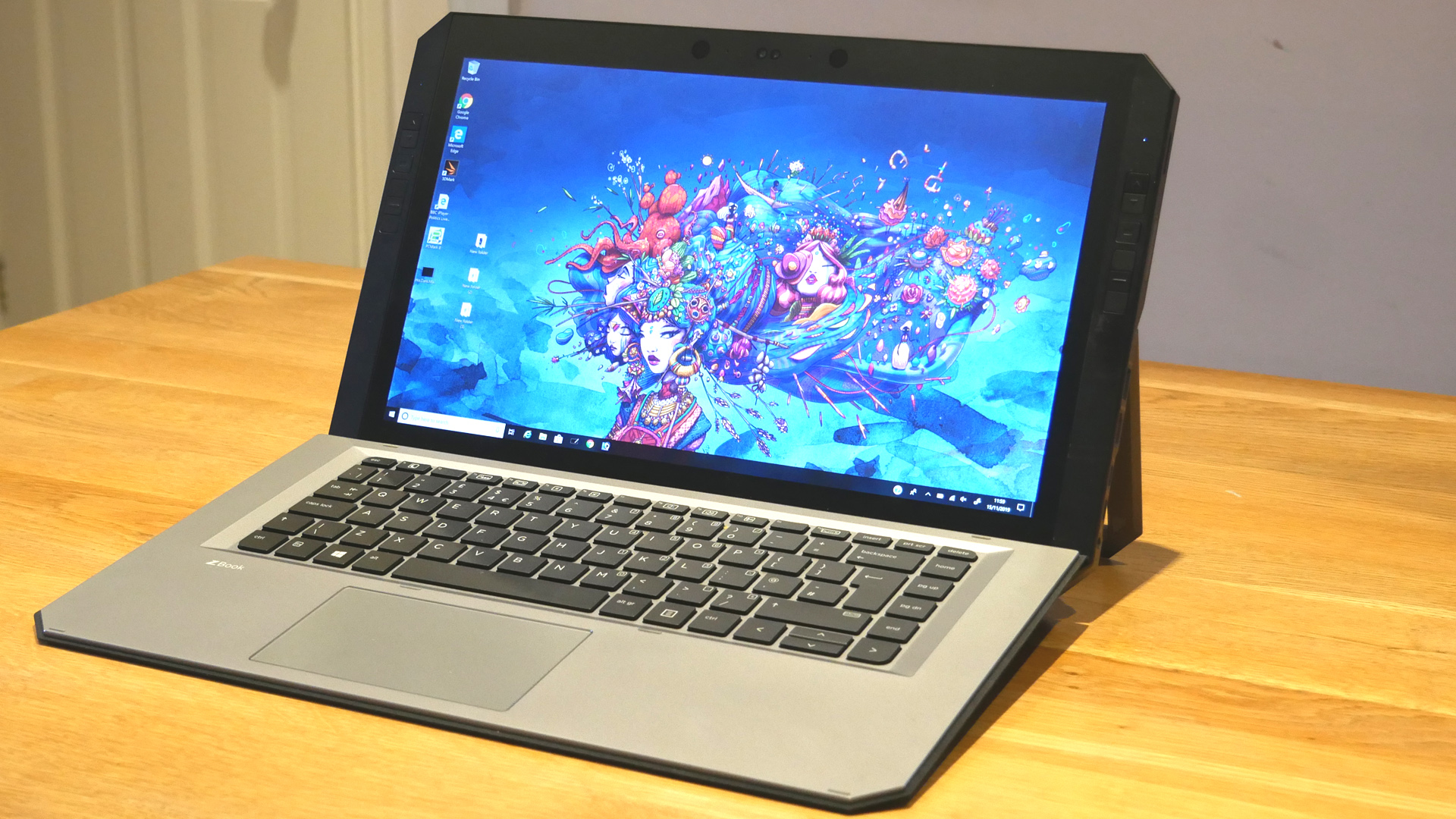
Of course, large bezels aren’t just an aesthetic issue. Thanks to the big bezels, this is a tablet that’s even bigger than the 14-inch display would have you expect. It’s a beast of a machine. But that’s probably helpful considering some of the hardware inside.
Sign up to the TechRadar Pro newsletter to get all the top news, opinion, features and guidance your business needs to succeed!
That includes a quad-core Intel Core i7-8650U processor, fully 32GB of RAM, a discrete Nvidia Quadro M620 GPU and a fully 1TB toshiba NVMe SSD. Taken together, they provide plenty of credibility for HP’s marketing pitch that this is workstation in tablet form.
The aforementioned 14-inch screen only adds to that impression. It’s an IPS panel with full 4K resolution and offers both 10-bit colour and support for fully 100 per cent of the Adobe RGB colour space. It’s also paired Wacom EMR input pen with 4,096 pressure-sensitive levels and claimed ultra low latency. Just note that the pen doesn’t have a slot or other dedicated stowage anywhere on or in the ZBook. It merely comes with it’s own little case.
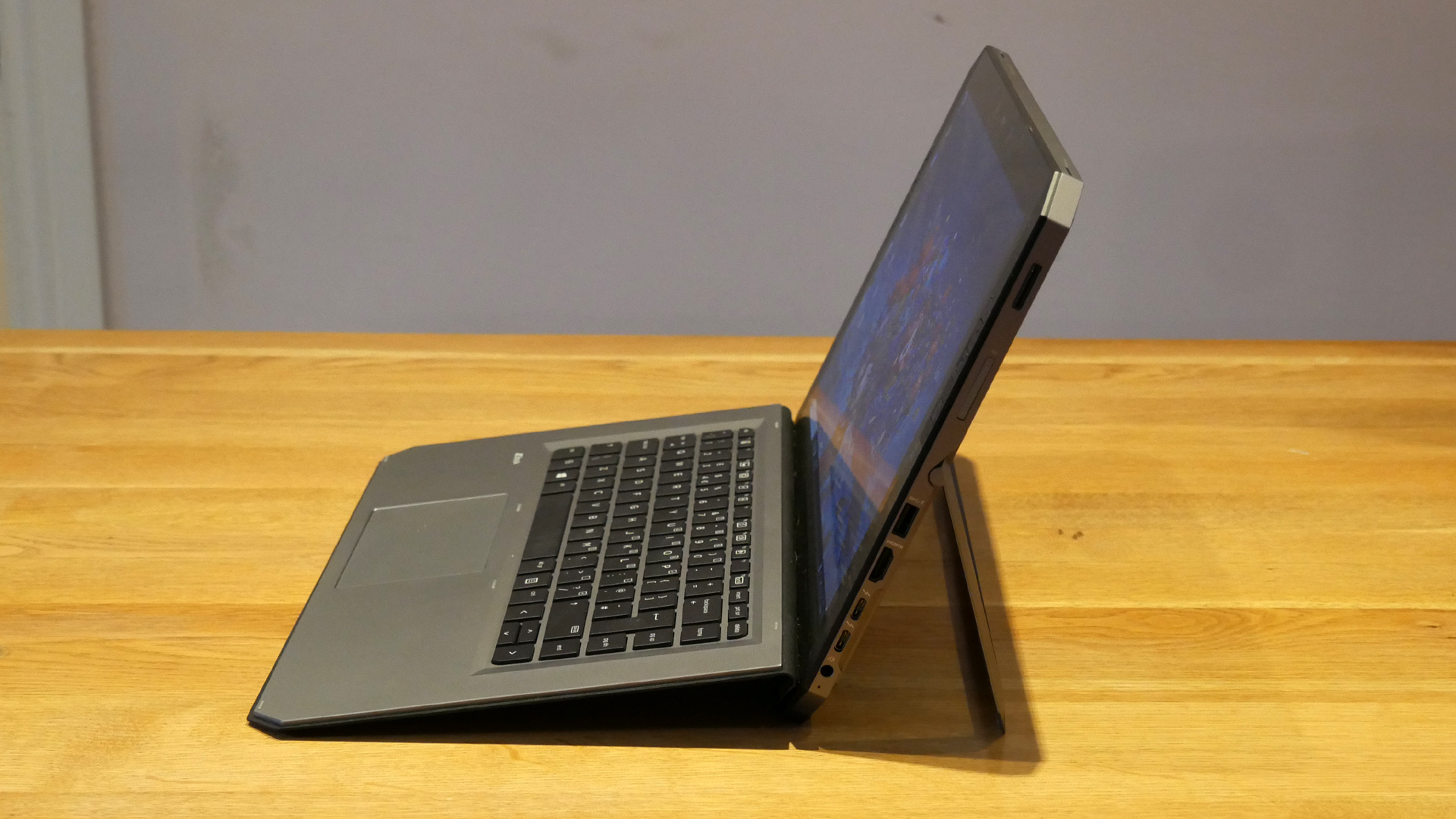
If the pen is very much a pro feature, so are the shortcut buttons either side of the display. The theory here is that navigating the dense menus and options in applications like those that make up the Adobe Creative Cloud can be fiddly using an input pen.
So, HP has designed in a set of 12 buttons, six on each side of the display which offer 18 preconfigured shortcuts customised for Adobe applications. Known as HP Quick Keys, they allow you to quickly switch size and hardness, turn touch on and off, pan and zoom, lock and unlock, and see a full-screen preview.
As for connectivity, there are two USB Type-C ports with Thunderbolt support, enabling two external 4K monitors, one USB 3.1 Type-A, HDMI 1.4 an SD card reader and a headphone jack. Finally, there two webcams, front and rear, the front facing camera including infrared functionality and Windows Hello facial recognition support. The side-mounted fingerprint scanner provides an alternative method for biometric authentication.
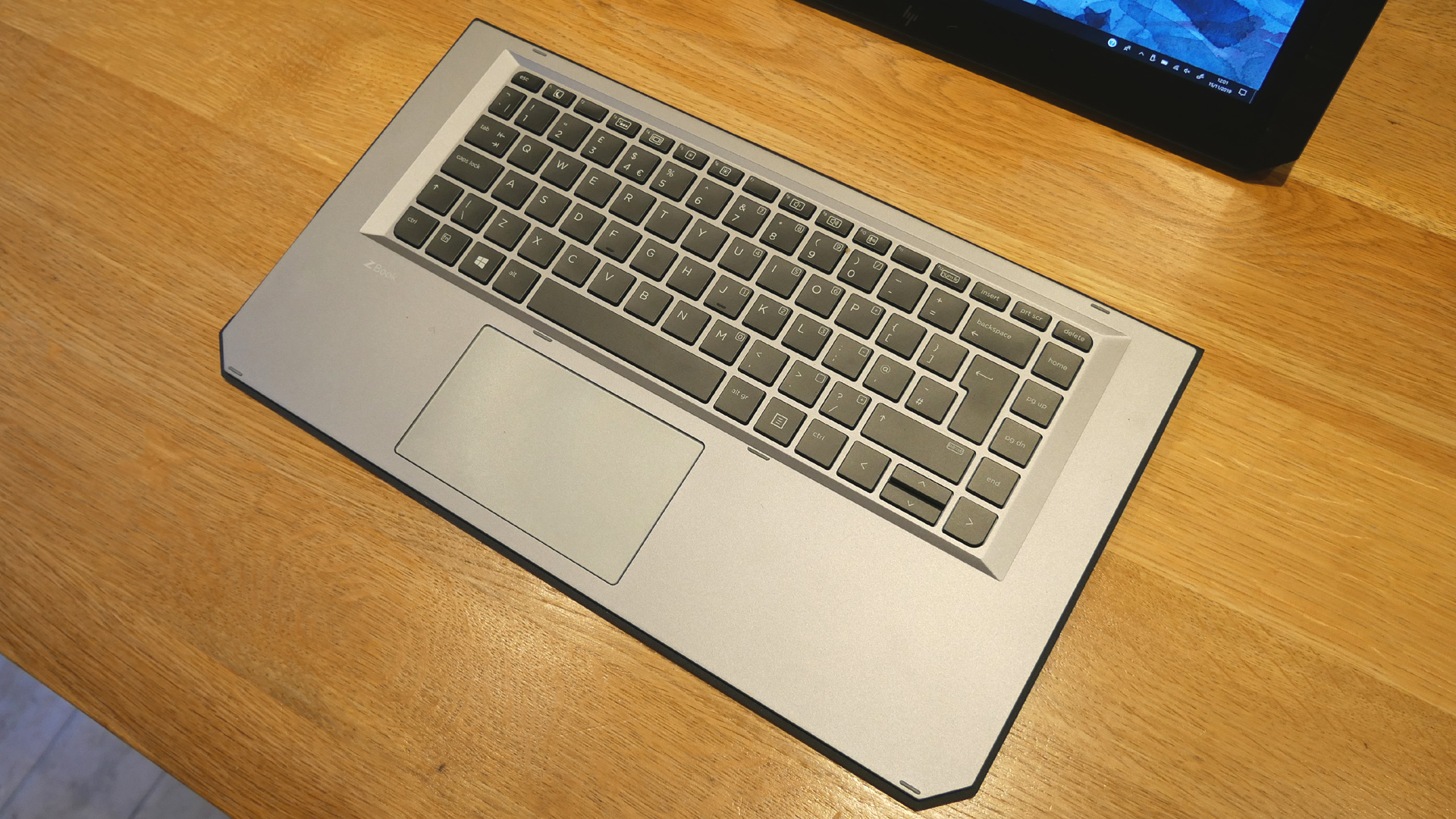
Performance and battery life
3DMark: Sky Diver: 8,138; Fire Strike: 2,551; Time Spy: 1,014
Cinebench R15 CPU: 501 points
GeekBench: 4,938 (single-core); 15,914 (multi-core)
PCMark 8 (Home Test): 3,405 points
Battery Life (TechRadar movie test): 4 hours and 7 minutes
It says something about how fast the CPU market has progressed recently that a tablet with a quad-core 8th Generation Intel CPU isn’t all that impressive. After all, Intel now does a 10th Gen ultra-low power six-core processor.
That said, the Intel Core i7-8650U is a pretty strong performer and is likely to meet informed expectations. The Nvidia Quadro M620 graphics, on the other hand, is less impressive. It’s based on the old Maxwell architecture, and thus is several generations old. It’s an improvement on Intel integrated graphics, but by discrete GPU standards, it’s very much entry level in raw performance terms.

As for the screen, it’s one of the highlights of the ZBook. The 4K resolution makes for serious sharpness, though that is somewhat compromised by a slightly sparkly anti-glare coating. That said, the colours are bang on and the viewing angles excellent.
As for the Wacom EMR pen, it’s a delight to use - responsive, precise and oh so accurate. It’s just a pity there’s nowhere to stow it in or on the device. Another highlight is the detachable keyboard. It’s extremely robust and gives a very laptop-like typing experience.
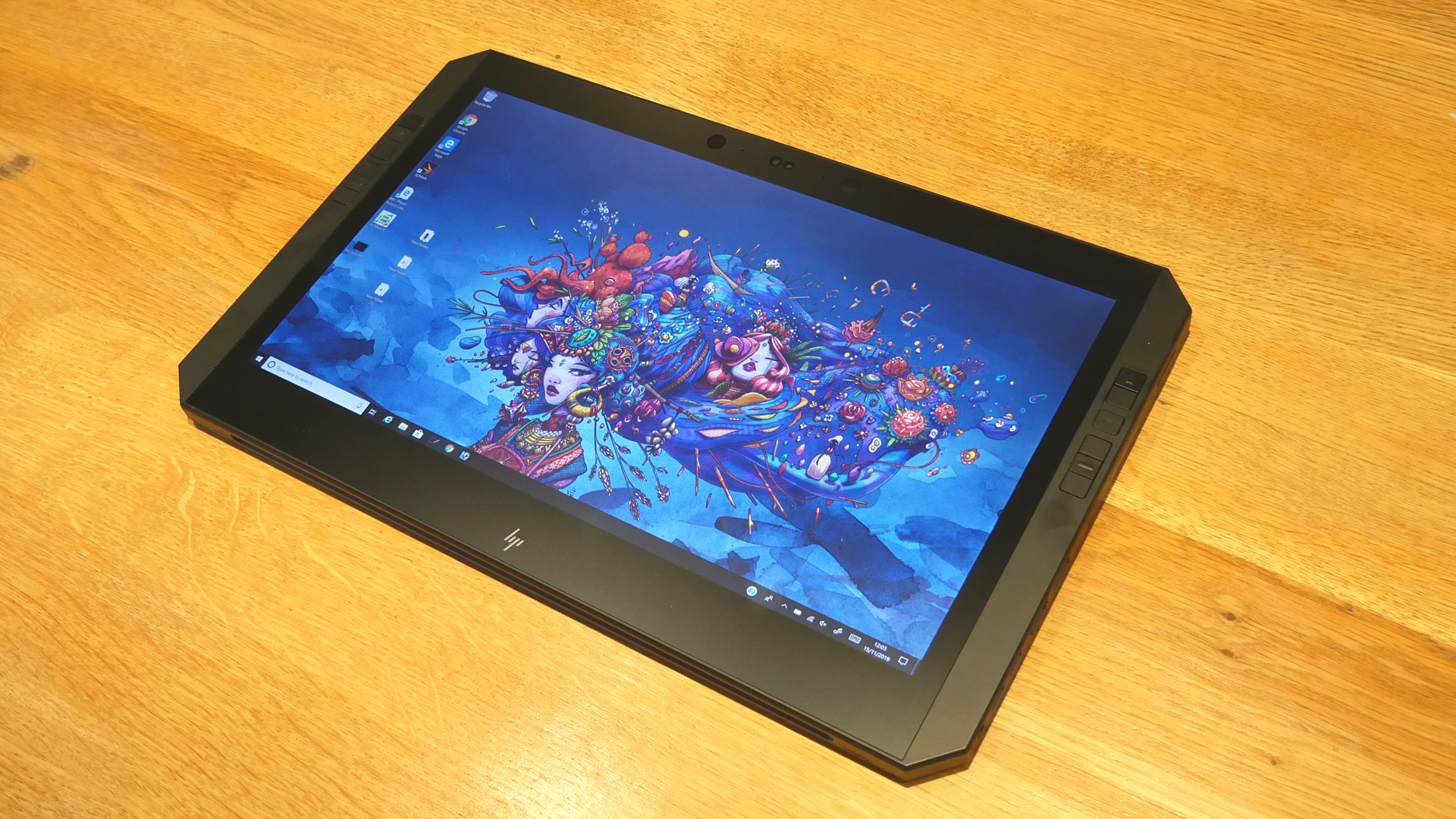
As for those HP Quick Keys each side of the display, they come with a bit of a learning curve. If you’re willing to put the time in, however, they pay dividends in terms of expediting efficient navigation of Adobe menus.
So far, so good? Yes, right up until you get to the issue of battery life. Roughly speaking, you’re looking at about four hours of battery life as configured from HP. We say ‘as configured’ because a key factor here is the discrete Nvidia GPU. The ZBook must be set to run only from the Nvidia GPU to enable the HP Dreamcolor Assistant, an app that allows switching between multiple colour spaces including Adobe RGB, sRGB and DCI P3.
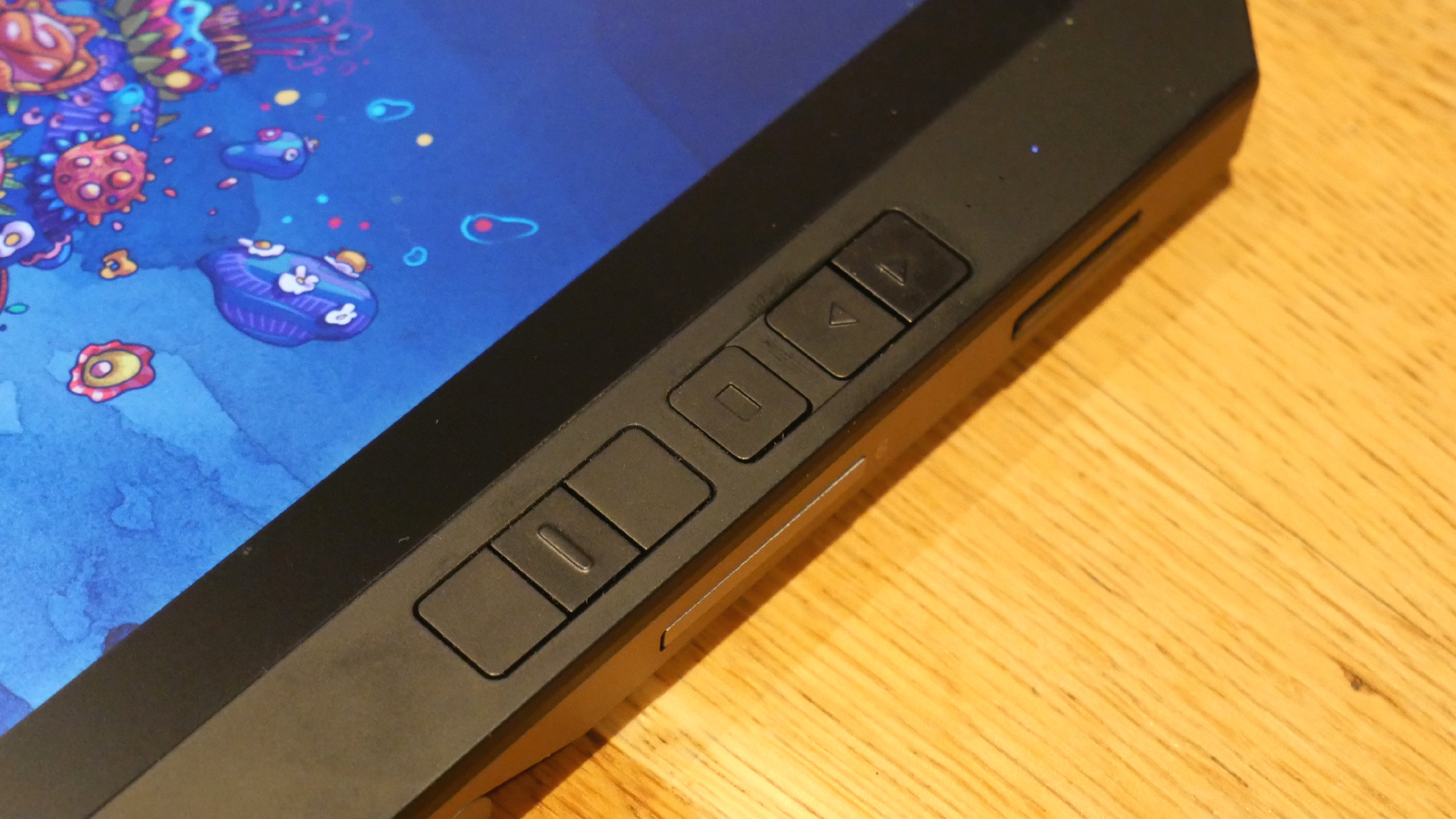
Running on the integrated GPU will likely net significantly more battery life but also limit functionality. It’s an unfortunate trade off. Oh, and for the record the ZBook’s integrated speakers are awful - thin, reedy and lacking in volume. Not a deal breaker, but worth bearing in mind.

Final verdict
The HP ZBook X2 is an extremely specialised device. It’s easy to make fun of the superficially clunky bezels and balk at the hefty price. But that’s to overlook the quality and attention to detail HP has put into the ZBook X2.
Physically, it’s a beautifully built device. The detachable keyboard is superb, the pen input functionality is fantastic, the support for colour spaces excellent and the core performance of the CPU is reasonable. The shortcut buttons give it further appeal for really serious content creation specialists.
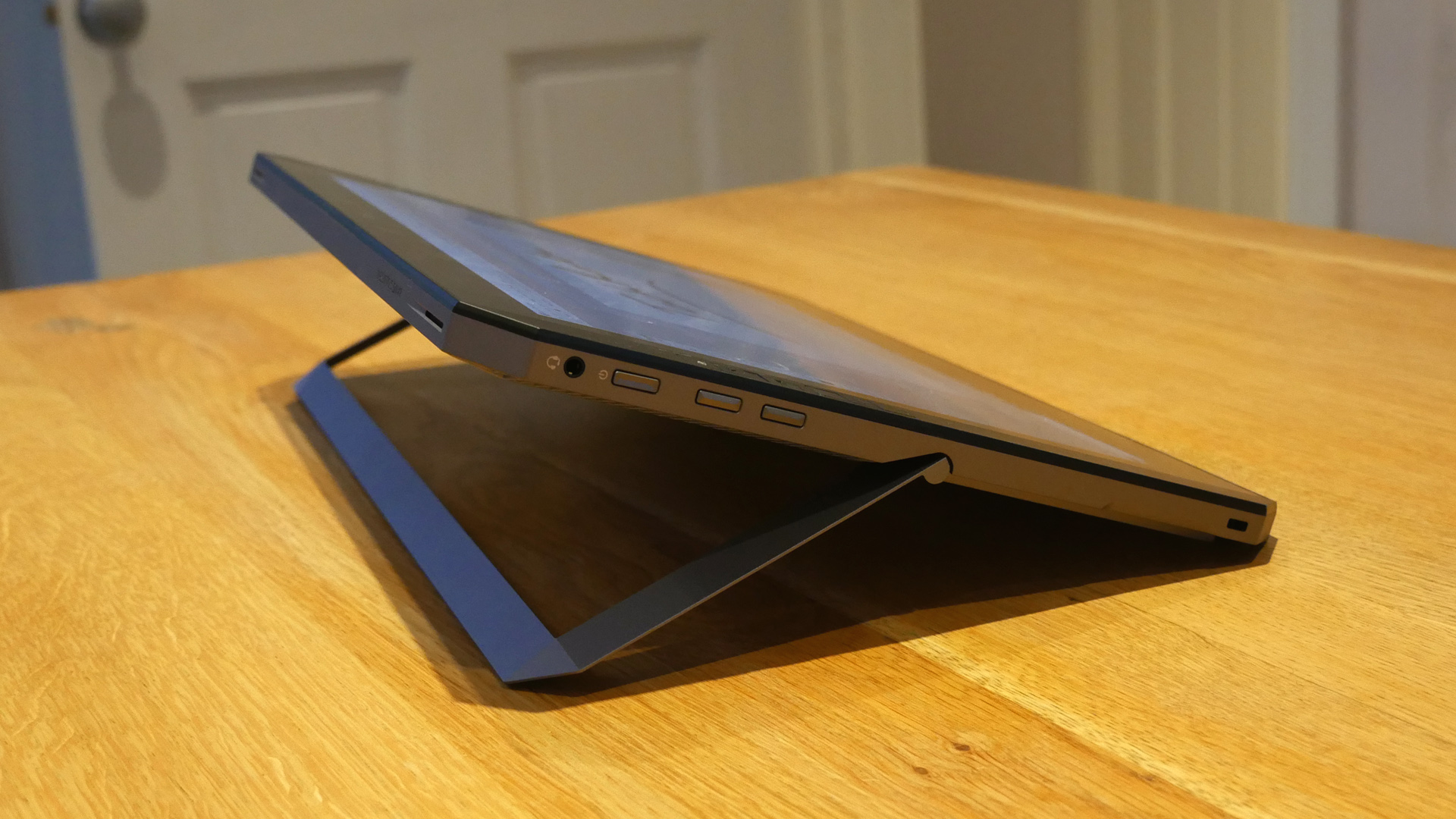
It is, however, a flawed device. The most obvious issue is battery life when running on the discrete Nvidia graphics. Four hours simply isn’t good enough. It’s particularly galling given the Nvidia chip is hardly a graphical powerhouse.
Tolerable battery life is achievable running from the integrated GPU, but at the loss of some functionality. If you need that functionality and decent battery life, then we suggest you look elsewhere. That aside and recognising that the ZBook is designed for a very specific market, it’s a quirky but impressive machine for professionals and well worth shortlisting if its capabilities map well with your workflows.
Technology and cars. Increasingly the twain shall meet. Which is handy, because Jeremy (Twitter) is addicted to both. Long-time tech journalist, former editor of iCar magazine and incumbent car guru for T3 magazine, Jeremy reckons in-car technology is about to go thermonuclear. No, not exploding cars. That would be silly. And dangerous. But rather an explosive period of unprecedented innovation. Enjoy the ride.
